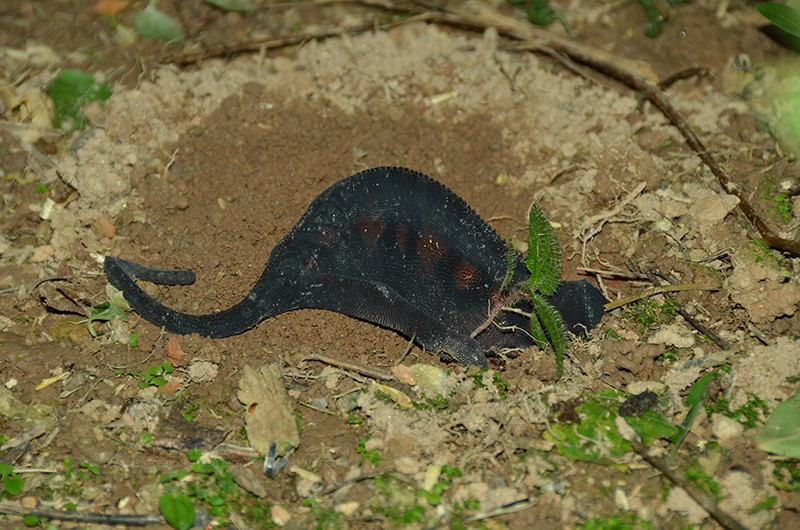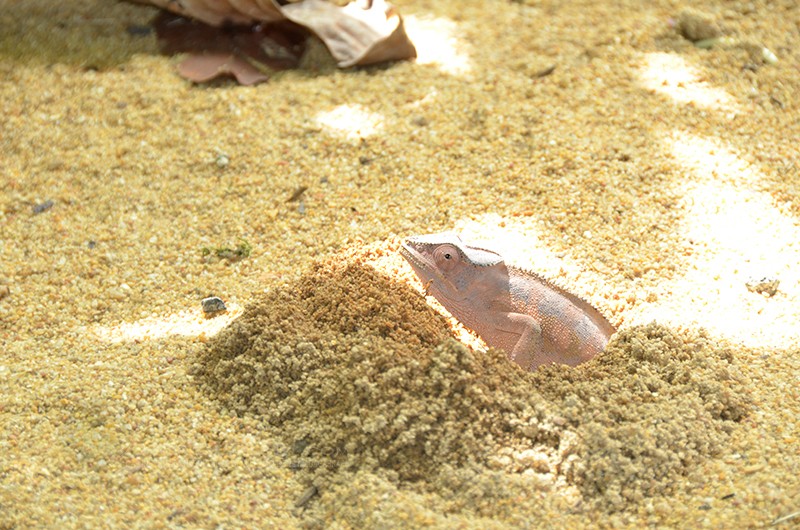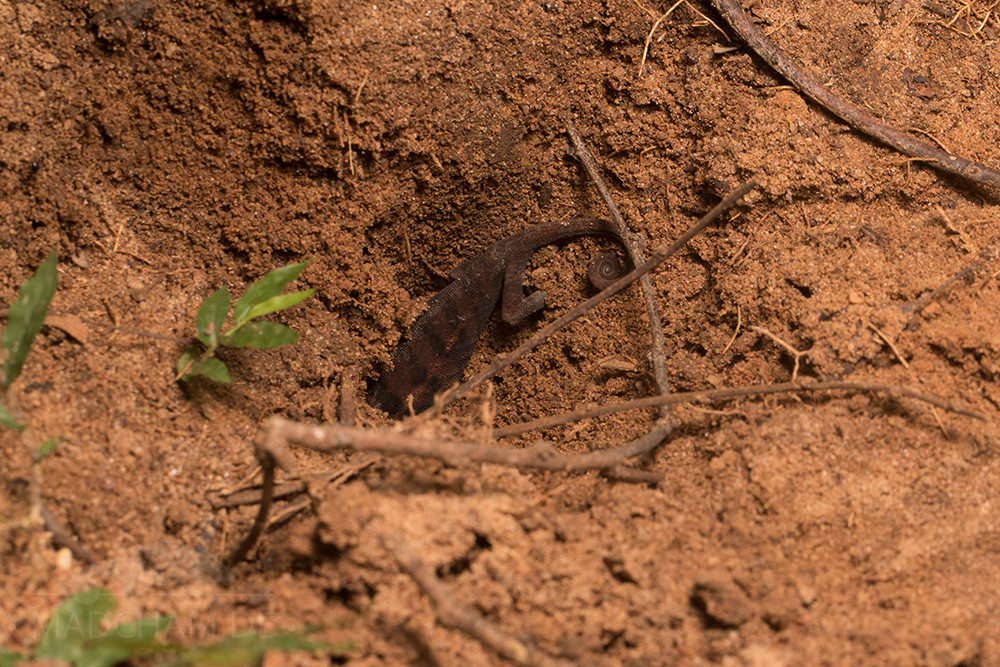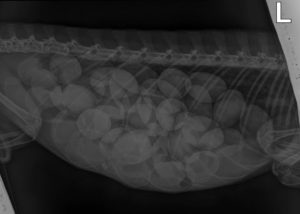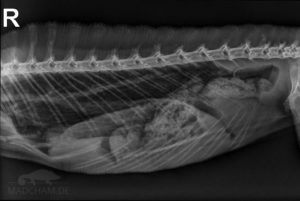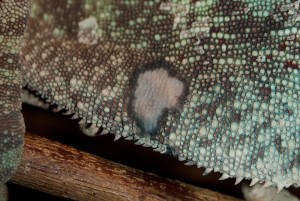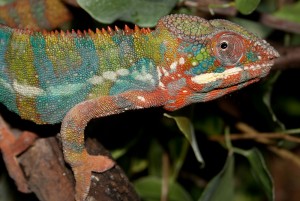What means egg-binding?
Egg-binding describes the fact that a female cannot lay her ready-to-lay eggs.
Causes
There are many things that can cause a chameleon to be egg bound:
- The eggs are too much calcified.
- The eggs are too less calcified: Be careful! Is the female really ready to lay or may it be that the eggs are developing normally, but it is too early for the female to lay them?
- Anatomical anomalies of the chameleon prevent it from laying eggs (pelvis too narrow, stuck oviducts).
- Other diseases prevent the laying of eggs, e.g. a metabolic bone disease or a tumor in the coelomic cavity.
- Husbandry deficiencies prevent the female from laying her eggs.
Poor husbandry
A major cause for egg binding in chameleons is poor husbandry, so we chose to expand on this topic.
Overfeeding: The more you feed a female, the quicker she develops. In chameleons, sexual maturity does not depend on age, but on body size and weight. That means quick growth leads to early sexual maturity. Overfed, fat animals generally tend to diseases more than restrictively fed, healthy ones. Additionally, overfed females produce much more eggs than would be healthy. In captivity, cases with clutches of 80 (!) eggs are known from veiled chameleons, although an average of 20 eggs would be normal in this species. Such huge clutches eat up the female. A female that had several large clutches like this will die earlier and tends more to develop egg binding.
Keeping male and female together in a limited space encourages very early ovulation. Since chameleons are generally solitary minds, pair keeping means chronic negative stress that may cause an egg binding in a female ready to lay.
Cage substrate: One of the most important points concerning poor husbandry. Many keepers do not know the gender of their pet or assume to have a male but own a female. Depending on species, females need at least a soil of 20-30 cm height of appropriate consistency to lay eggs. Mixtures from sand and soil or pure forest soil have proven to work fine. It would also be good to offer different humidity zones and many plants. Chameleon females usually love to hide the egg deposit behind plants and prefer laying places between roots. We do not recommend to use heat panels beneath the soil. In the wilderness, the deeper a female digs, the cooler becomes the soil. In captivity, warm soil on the bottom of the cage may stop the female from digging.
Disturbances: Another important problem in egg-laying. Chameleons prefer undisturbed places to dig, while the keeper usually wants to “have a look” as often as possible to see whether the female has already finished egg deposit. Please avoid any unnecessary work inside the cage while the female is looking for a good place to dig. It makes no sense to put the female down to the ground or force her to sit in a dark bucket – this disturbs the natural behavior. With correct husbandry, a female chameleon should be able to lay eggs without any human intervention.
Food and supplementation: Egg binding can also be caused by a lack of calcium. To produce eggshells, the female needs more calcium during gravidity that needs to be supplemented via food. You cannot calcium that is given orally via food! As long as the vitamin D3 level is physiologic, too much calcium leaves the gut unaltered. To get physiologic vitamin D3 levels in your chameleon, UVB radiation is essential, but also vitamin D3 supplementation. During egg deposit, the female needs calcium for muscle contractions. If the female lacks calcium, eggs may be too less calcified and build a mechanic barrier or the female may have not enough stocks to finally lay the produced eggs.
Symptoms – which signs indicate egg binding?
The most important part for you is to know the normal gestation period of the species you keep. Many females become restless first and begin to dig a little, but suddenly somewhen stop digging without having laid a clutch. The first days or in inexperienced females, these may have been “trial diggings”. But if your female is already far beyond her “laying date”, better be safe and bring her to your reptile vet. Single eggs spread around the cage may also be signs of a female being egg bound. Females that have been egg bound for several days yet, are often very weakened, have sunken eyes, are dark-colored, move less, and begin to close the eyes during the day. If your female shows such signs, do an emergency call to your vet – every minute counts!
Therapy
There are several ways to treat an egg bound female. In any case, you should visit your vet with the animal as soon as possible. Your vet will do x-rays to evaluate the size, number, and shells of the eggs, and to see whether the female is able at all to lay her eggs naturally.
Usual therapy options are surgery to remove the eggs or a conservative trial by giving calcium and oxytocin (a hormone). It depends on your chameleon and its condition which way is suitable for you. Your reptile vet will advise you appropriately and treat the chameleon the best way.
Note:
Ready-to-lay eggs that remain in the coelomic cavity and are not removed will sooner or later lead to the death of the animal, inevitably. Therapy is mandatory!

